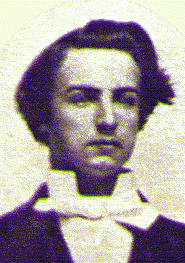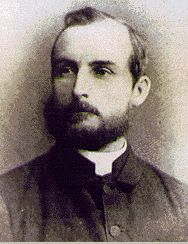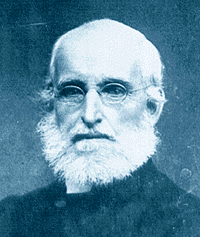NAPARIMA COLLEGE
FOREVER
Notes on the Canadian Mission to Trinidad, IX
Highlights of the Pioneer Adventure: Rev. Dr. John Morton
~ roses, oranges, mangoes and grand-children ~
|
The entire nineteenth century was an era of exciting new world exploration and adventure; and the missions were the religious expression of this adventurism. Consider: Rev. Morton "sold" his Trinidad mission to his ecclesiastical higher-up's in part based upon the "accessibility" of Trinidad! (Only three weeks' sail from Nova Scotia!) This was in comparison to the existing foreign mission of the church in the New Hebrides. Despite the relatively short voyage, transoceanic sailing in the 1800's was still a risky business. The craft were small, sometimes overloaded and weather forecasting was pretty well limited to a barometer and the well-known rhyme about red skies in the morning. Dr. Morton's second voyage to Trinidad, with his wife and 3-year-old daughter, was a perilous one. The brigantine, Aurora, out of Bridgewater, N.S., ran into a hurricane en route; the masts of their vessel were cut away, and all on board had consigned themselves to the grace of the Almighty more than once before their arrival in the West Indies. A new bark (the "Stephen McKean") which departed with the same time and route was lost with all hands, its wreck being found three years later near the Bermudas; and many other vessels in this tempest barely limped through to Bridgetown, Barbados, in similarly bedraggled condition. (By comparison, Dr. Grant, also with a young wife and small child enjoyed plain sailing, leaving Nova Scotia on November 5, 1870, and setting foot at Port of Spain on November 20). Nevertheless, with the voyage behind him, and physical salvation temporally assured, Rev Morton's appreciation of Trinidad's mountains, as he penetrated the Bocas and the serene waters of Trinidad's Gulf of Paria, is recorded in his diary. Clearly, upon his first visit, Rev. Morton fell in love with Trinidad and his chosen work. On a visit to England late in his career, (at which he lunched for the second time in forty years,with Lord Stanmore, former Governor of Trinidad, the first time being in Trinidad in 1870), he records in his diary at Winchester, as he journeys toward Southampton, the port of embarkation for Trinidad: "27 Mar 1910: Here we are 60 miles from London: that is 60 miles nearer to Trinidad, and only 12 miles from Southampton. I shall be heartily glad to get back to the dear old island, and to a quaint home life amid roses, oranges and mangoes, and grand-children."Having committed to his mission to Trinidad in 1868, Dr. Morton worked first in Iere Village for 9 years, and then in his ministry at Tunapuna until the end of his life on August 4, 1911, in the country of his adoption. His death was preceded by six days by that of Andrew Gayadeen, native disciple and servant of the Presbyterian church. Both pillars of the Presbyterian missionary enterprise in Trinidad were laid to rest at the Aramalya church in Tunapuna, Trinidad, in the then British West Indies. His life's work and last days are restrainedly but touchingly recorded in his wife's and fellow-missionary's book: John Morton of Trinidad. |    |
Canadian Mission index page
The Aurora
Main NC-Forever Page